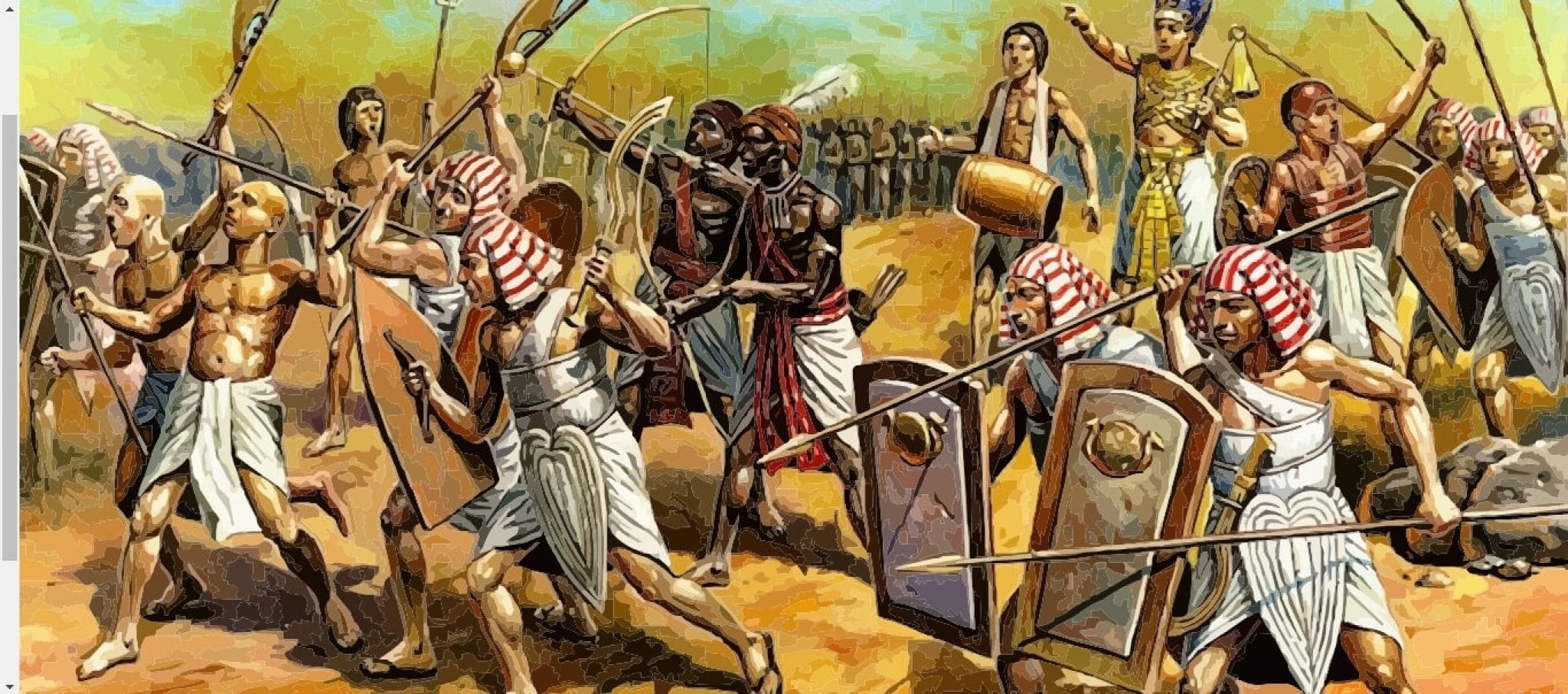The Battle of Megiddo, fought in the 15th century BC, stands as a landmark event in ancient military history. This clash, meticulously documented in the annals of time, offers a vivid glimpse into the strategic complexities and far-reaching consequences of warfare in the Late Bronze Age. Situated at the crossroads of ancient trade routes, Megiddo bore witness to a clash of empires that would forever shape the political landscape of the Near East.
The Rise of a Warrior Pharaoh: Thutmose III and the Canaanite Rebellion
The seeds of conflict were sown when a coalition of Canaanite city-states, chafing under Egyptian rule, dared to challenge the might of the New Kingdom. Leading this audacious rebellion was the King of Kadesh, a figure shrouded in mystery, but whose defiance posed a significant threat to the stability of Egypt’s dominion.
Ascending the throne as a young ruler, Pharaoh Thutmose III faced a formidable test early in his reign. The Canaanite uprising demanded a swift and decisive response, and Thutmose III, eager to prove his mettle, rose to the challenge. Assembling his armies, he embarked on a campaign northwards, determined to crush the rebellion and secure Egypt’s borders.
The Road to Megiddo: A Daring Strategic Gambit
The Egyptian army’s advance brought them to a strategic crossroads. Multiple routes led towards Megiddo, the heart of the rebellion. Most of Thutmose III’s seasoned advisors favored the well-trodden paths, urging caution and prudence. However, Thutmose III, in a display of boldness that would define his legacy, opted for a more perilous route.
The Aruna Pass, a narrow and treacherous defile, offered a swift but risky passage towards Megiddo. It was a gamble, a calculated risk that could either secure a swift victory or lead the Egyptian army into a deadly trap. Thutmose III’s decision, immortalized in his annals, reveals a leader willing to defy convention and embrace risk in pursuit of strategic advantage.
The Clash at Megiddo: Reconstructing an Ancient Battlefield
The Battle of Megiddo unfolded with a dramatic suddenness. Thutmose III’s gamble paid off; his forces emerged from the Aruna Pass, catching the Canaanite army completely off guard. The ensuing clash, while its exact details remain a subject of scholarly debate, ultimately resulted in a resounding Egyptian victory.
The Annals of Thutmose III, inscribed on the walls of Karnak Temple, offer a vivid, if somewhat biased, account of the engagement. These inscriptions depict the Egyptians routing their foes, capturing vast quantities of chariots, weapons, and prisoners. The siege of Megiddo itself, a protracted affair lasting several months, ended in the city’s surrender and the complete collapse of the Canaanite rebellion.
Megiddo’s Enduring Significance: From Ancient Battlefield to Biblical Prophecy
The significance of the Battle of Megiddo extends far beyond its historical context. The battle’s location, atop a strategic mound overlooking vital trade routes, ensured that Megiddo would remain a battleground for centuries to come. The echoes of this ancient clash reverberate through time, influencing military thought and shaping religious interpretation.
In the realm of military history, Megiddo stands as a testament to the importance of decisive action, strategic surprise, and the effective utilization of terrain. Thutmose III’s bold decision to traverse the Aruna Pass serves as a timeless example of how calculated risks can yield decisive advantages on the battlefield.
Beyond its military significance, Megiddo occupies a prominent place in biblical tradition. Referred to as “Har Megiddo” in Hebrew, the site became associated with the apocalyptic battle of Armageddon described in the Book of Revelation. While interpretations of Armageddon vary, its association with Megiddo highlights the enduring power of this ancient battlefield to evoke images of both conflict and ultimate resolution.
Unearthing the Past: Archaeological Insights and Ongoing Discoveries
Today, the site of Megiddo, known as Tel Megiddo, is a UNESCO World Heritage Site and a focal point for archaeological research. Excavations at Tel Megiddo have revealed a multi-layered history, with evidence of human occupation spanning millennia. The site’s strategic location and tumultuous past have left behind a rich tapestry of artifacts, offering invaluable insights into the lives of the people who lived, fought, and died at Megiddo.
Recent archaeological discoveries continue to shed light on the Battle of Megiddo and its aftermath. Excavations have unearthed fortifications, weapons, and other artifacts that provide tangible evidence of the conflict. The analysis of skeletal remains offers glimpses into the lives and deaths of those caught in the crossfire, while the study of pottery shards and other domestic items helps reconstruct the daily lives of the people who called Megiddo home.
The Battle of Megiddo serves as a powerful reminder that the echoes of the past continue to resonate in the present. Through ongoing archaeological research, careful analysis of historical texts, and thoughtful interpretation of religious tradition, we gain a deeper understanding not only of this ancient clash of empires but also of our shared human story. The lessons of Megiddo, a place forever etched in the annals of warfare, continue to inform our understanding of strategy, conflict, and the enduring legacy of the past.
- Crypto Quotes’ Red Flags: Avoid Costly Mistakes - June 30, 2025
- Unlock Inspirational Crypto Quotes: Future Predictions - June 30, 2025
- Famous Bitcoin Quotes: A Deep Dive into Crypto’s History - June 30, 2025
















